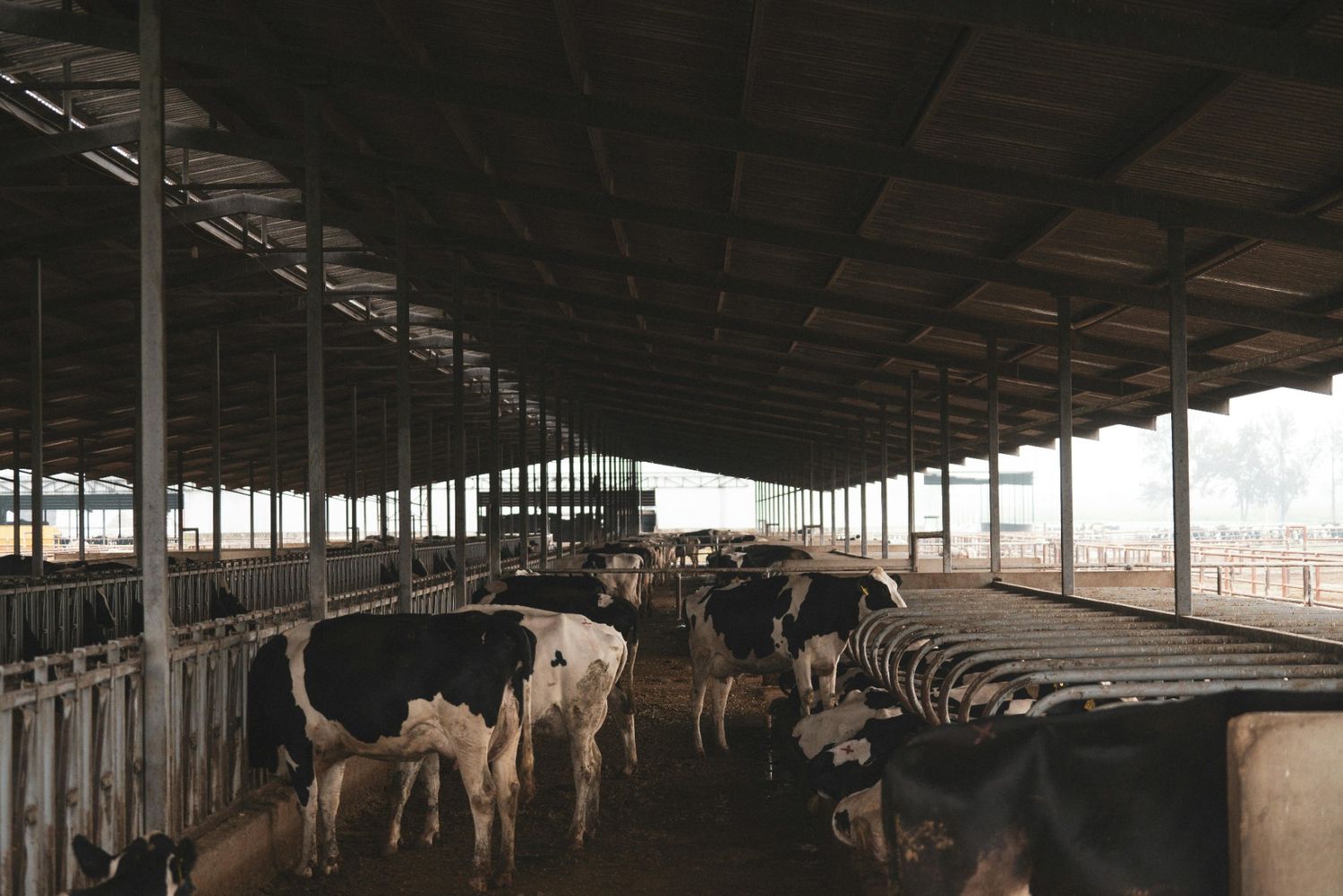How Dairy Companies Can Achieve Net Zero by 2030

Introduction: The Race to Decarbonize Dairy
Dairy companies worldwide face a pivotal challenge: how to align with global net-zero targets while maintaining productivity and profitability. With growing regulatory scrutiny, shifting consumer preferences, and mounting investor pressure, the industry must accelerate emissions reductions across the entire dairy supply chain.
The 2030 net-zero goal is ambitious, but achievable. Advancements in low-carbon dairy farming, methane mitigation, carbon insetting, and renewable energy adoption are making it possible for dairy processors, cooperatives, and farmers to dramatically cut emissions while securing long-term business viability.
This article explores the practical steps dairy companies must take to meet the 2030 net-zero target, ensuring compliance with the EU Corporate Sustainability Reporting Directive (CSRD), Science Based Targets initiative (SBTi), and Scope 3 FLAG requirements.
Understanding Dairy’s Carbon Footprint: Scope 1, 2, and 3 Emissions
Achieving net zero dairy requires addressing emissions across all scopes:
- Scope 1: Direct emissions from dairy operations, including fuel consumption, processing plants, and manure management.
- Scope 2: Indirect emissions from purchased electricity, which can be mitigated through renewable energy.
- Scope 3: Supply chain emissions, which account for over 90% of dairy’s total footprint, including feed production, methane from cows, transportation, and packaging.
Since the majority of dairy’s emissions fall under Scope 3, companies must collaborate with farmers and supply chain partners to implement effective decarbonization strategies.
Five Key Strategies to Achieve Net Zero Dairy by 2030
1. Cutting Methane Emissions at the Farm Level
Methane accounts for over 60% of dairy’s total emissions, primarily from enteric fermentation and manure management. Reducing methane is the fastest way to decarbonize dairy.
Solutions for methane reduction:
- Feed additives like Bovaer (3-NOP) – Reduces methane from enteric fermentation by 20-30%.
- Improved manure management – Anaerobic digesters convert methane into biogas, reducing emissions by up to 80%.
- Breeding for low-methane cattle – Genomic selection can lower methane intensity per liter of milk.
Case Study: New Zealand’s Fonterra cooperative is piloting low-methane dairy breeding and feed solutions, aiming for a 30% methane reduction by 2030.
2. Regenerative Agriculture and Carbon Sequestration
Adopting regenerative farming practices allows dairy companies to offset emissions through soil carbon sequestration while improving farm productivity.
Key practices include:
- Rotational grazing and silvopasture enhance soil health and carbon capture.
- Cover cropping and minimal tillage – Reduces nitrogen-based emissions while improving soil biodiversity.
- Agroforestry and hedgerows – Increase carbon sequestration on dairy farms.
Case Study: Danone has committed to scaling regenerative dairy farming, with the goal of cutting Scope 3 emissions by 50% by 2030.
3. Decarbonizing Dairy Processing and Distribution
Dairy processors can significantly cut Scope 1 and 2 emissions through renewable energy adoption and efficiency upgrades.
Key measures include:
- Switching to 100% renewable electricity – Solar, wind, and biogas-powered processing plants reduce carbon footprint.
- Optimizing cold storage and refrigeration systems – Energy-efficient cooling reduces emissions.
- Electrification of milk transport fleets – Biofuels and EVs cut transportation-related emissions.
Example: Nestlé’s dairy processing facility in Brazil has reduced emissions by 20% in five years through solar energy and sustainable refrigeration.
4. Carbon Insetting: Offsetting Emissions Within the Supply Chain
Unlike traditional carbon offsetting, insetting focuses on emissions reduction within a company’s own supply chain. This ensures that climate action directly benefits farmers and business partners.
Examples of dairy insetting initiatives:
- Investing in biogas digesters for dairy farms – Capturing methane while generating renewable energy.
- Supporting afforestation projects on dairy lands – Creating carbon sinks within supply chains.
- Funding farmer transition to regenerative practices – Incentivizing soil carbon sequestration.
Case Study: Arla Foods has developed a carbon-insetting framework, rewarding farmers for reducing their carbon footprint while strengthening its sustainability reporting.
5. Complying with Climate Regulations and CSRD Reporting
Dairy companies must align with emerging sustainability regulations, including:
- CSRD – Mandates emissions reporting across Scope 1, 2, and 3 for EU-based dairy companies.
- SBTi FLAG – Requires science-based targets for dairy supply chains to align with the Paris Agreement.
- EU Methane Strategy – Calls for methane reduction in agricultural supply chains.
Example: FrieslandCampina has set science-based Scope 3 emissions targets, ensuring compliance with SBTi FLAG and CSRD.
How ODOS Helps Dairy Companies Reach Net Zero
ODOS provides AI-powered carbon footprinting, methane tracking, and sustainability analytics to support dairy’s net-zero transition.
- Precision tracking of Scope 1, 2, and 3 emissions (FLAG and Non-FLAG) using farm-level data.
- Custom sustainability strategies for methane reduction and carbon insetting.
- CSRD and SBTi-compliant reporting tools to meet regulatory requirements.
Discover how ODOS can help your dairy company achieve net zero by 2030.
Conclusion: The Future of Dairy is Net Zero
The path to net-zero dairy by 2030 is clear, but achieving it requires rapid innovation, investment, and collaboration across the supply chain.
Companies that lead in methane reduction, regenerative agriculture, renewable energy, and carbon insetting will not only future-proof their businesses but also gain a competitive edge in the sustainable dairy market.
Net-zero dairy is no longer an aspiration. It is an industry-wide imperative. The companies that act now will be the ones that define the future of dairy.
